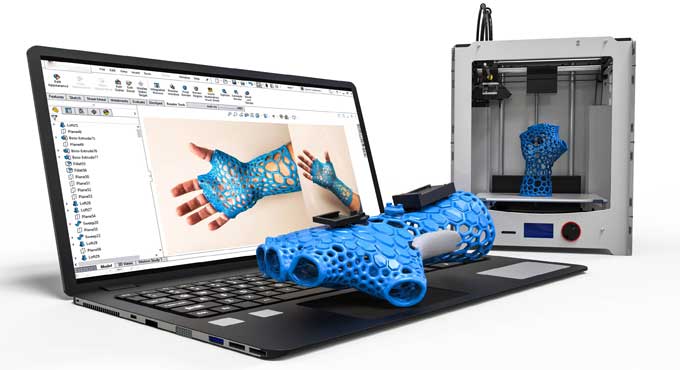Are you looking for ways to design new products in your business using 3D Prototyping?

Iteration may take weeks or even months using conventional prototyping methods, such as injection molding and mockups. As soon as the prototype has been completed, every revision will require the same amount of work. You should also keep in mind that the expenses for each unit quickly add up. Traditionally, prototyping a product design is a lengthy process, but additive manufacturing methods can significantly reduce the time and budget.
Importance of 3D Printing Prototypes
Prototyping rarely requires making just one model because a prototype is actually a work in progress and an early version of a product that needs changes. Until the method is nearly identical to the final product, it frequently takes several iterations.
Because 3D printing services make it possible for product designers to create personalized models rapidly and affordably, they are the ideal technology for prototyping. Every purpose can be served by a variety of materials.
3D printers are the ideal tools for the task for a variety of reasons, regardless of whether you run a small prototyping firm in your garage or a huge bespoke manufacturing company.
Limitless Iterations
Although limitless iterations may be a bit of a stretch in this case, the idea still holds true. Although 3D printers are capable of producing countless prototype versions, they are not tools for mass production. The prototype begins as a computer generated 3D model, which the designer of the 3D product modeling can alter as work progresses and have the updated version printed in a matter of hours.
All 3D printers have their limitations. You might also require a printer with more advanced hardware if the CAD model is very elaborate and sophisticated. Consumer grade print could conceivably be used to create the prototype, but the results would probably be subpar.
Cost Saving
The cost effectiveness of additive manufacturing is substantially greater than that of traditional prototype techniques like injection molding. The results are faithful to the CAD model even though you do not have to make the mold. A company does not need to set up a unique space or engage specialized specialists to operate the equipment because most 3D printers are quite compact and largely automated.
Reducing Time
The size and intricacy of the object, as well as the printer's specifications, all affect how long it takes to print. For instance, a simple block model produced on a midrange 3D printer might just require a few hours to finish, and the turnaround time increases as the complexity of the details increases. Additionally, since any business can complete it internally, it is a prototype manufacturing process that saves time.
Functional Prototypes
Metal 3D printers provide a quick way to create working prototypes for items with internal mechanics made of these components. High end 3D printers may use metal filaments and stiff materials like carbon and glass fiber. There are now just a few metal filaments on the market, including stainless steel, copper, tool steel, and aluminum.
3D Printers Cost
A 3D printer that uses plastic based filament can cost anywhere from $400 to $2,500. Consumer grade products or small business products are the most common types. 3D printers are entirely different in price if the prototype has to be made of metal material.
The good news is that there are many options available between the lowest and highest prices. Depending on your business and prototyping needs, cheaper 3D printers can be more useful than their more expensive counterparts if they have the right capabilities.
3D Printing Uses in Prototyping
Despite the fact that 3D printing has a wide range of uses, fast prototyping companies are its main users. The technique is a great option since it offers a wide variety of material options and quick production turnaround. Additionally, the comparatively modest initial investment cost enables small firms and common innovators to complete their prototypes without breaking the bank.
To learn more, watch the following video tutorial.
Video Source: Formlabs
For the initial prototyping stage, it should produce results that are satisfactory. Simple mockups of jewelry designs, architectural models, and product pieces can be made with the printer. Despite being a fantastic tool for fast prototyping, 3D printing is not intended to be a tool for mass manufacturing.
High strength materials like carbon fiber are used to strengthen some plastic products. One of the strongest plastic filaments is polycarbonate, which should not be confused with acrylic or plexiglass. The filament is typically mixed with binders when printing a metal prototype; although this requires post processing, such as sintering, the end result is as dense and hard as cast metal. Glow in the dark, wood filled, clay or ceramic, dichromatic, conductive, and color changing filaments are some of the more fun options.



